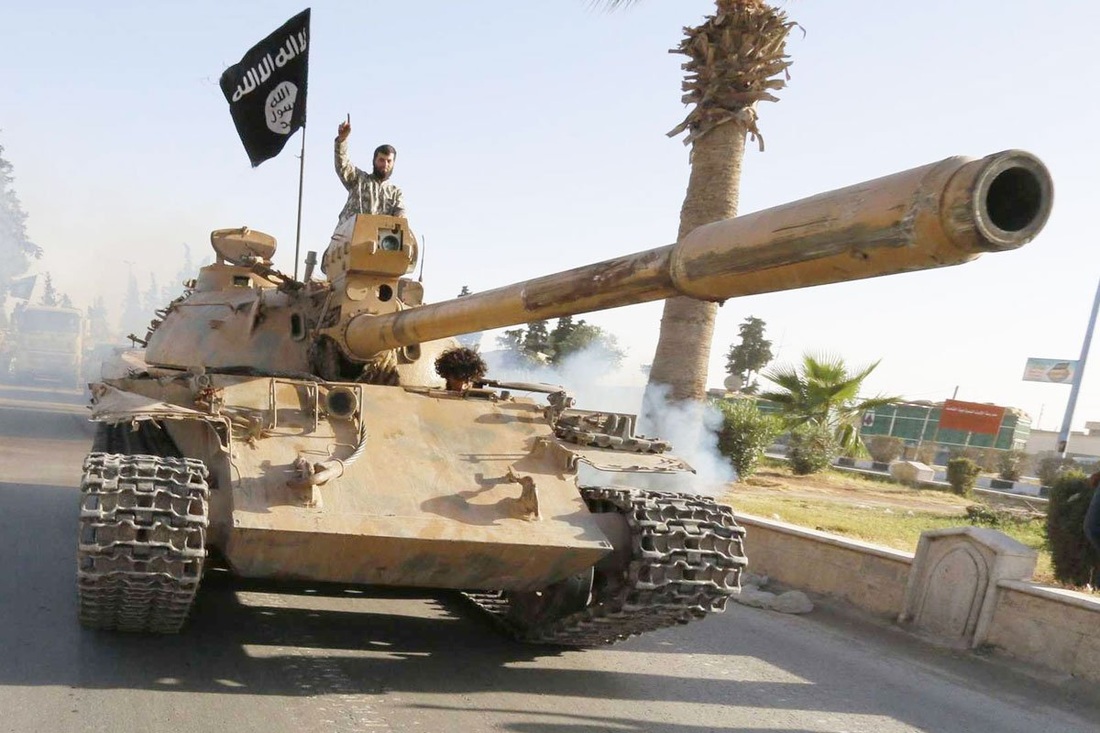The one facet that was repeated not only by most of my fellow panellists, but also from the majority of the audience, is the horror they felt following my comparison of the terrorists in Daesh with people I also describe as terrorists inside the Hashd Al-Sha’bi, or Popular Mobilisation Forces (PMF).
The argument usually follows something along the lines of Daesh being an almost mindless entity with no political agenda but a singular focus on sectarian murder and mayhem and depravations that have been listed at length elsewhere. The PMF, on the other hand, are “volunteers” who put their lives on hold to heed the call of Ayatollah Sistani to fight the terrorists who swiftly conquered a succession of Iraqi towns and cities in 2014. Further, whilst individual acts of sectarian terror and abuses occur, they are not in the same ballpark or even on the same scale as atrocities committed by Daesh. That argument is nonsensical.
Firstly, Daesh has a political agenda, and it has made that abundantly and repeatedly clear. It wishes to assume control of a swathe of territory that is largely homogenously Sunni in character and governed by its warped version of Sharia, or Islamic law, in an equally warped vision of a caliphate. Brutal and despicable it may be, but it is hardly a mindless killing machine with no concept of what it would like its future state to look like, and this makes it all the more dangerous
It is also no secret that the PMF and its constituent militias are heavily funded and supported by the Iranian regime who has now positioned the PMF in the same place as the Pasdaran, or Iranian Revolutionary Guard Corps (IRGC), was in after Khomeini’s 1979 revolution. At the time, Khomeini encouraged the expansion and armament of paramilitary units such as the Pasdaran and also theBasij, a lesser militia force, in order to counter the power of the formal military so that he may coup-proof his new fiefdom. Comparatively, the PMF has now been formalised and legalised as anentirely independent military organisation separate from the traditional ISF – a dangerous precedent.
Further, describing the PMF as “volunteers” is a foolhardy attempt at granting an organisation led by terrorists such as Qais Al-Khaz’ali and Abu Mahdi Al-Muhandis, by way of IRGC General Qassem Soleimani, a veneer of legitimacy by connecting them to the Iraqi people. The reference is, of course, to Sistani’s fatwa calling on the people to volunteer to fight Daesh. However, as the fatwa clearly states on Sistani’s own website, the religious authority encouraged Iraqis able to bear arms to “volunteer and join the [Iraqi] security forces”. At no point did Sistani give a formal, divinely ordained green light for the PMF to be created as it was at the time not part of the ISF, so why did these “volunteers” not volunteer to join the national army?
Also, the volunteering argument implies that Daesh fighters have not also “volunteered” for their false jihad. While there are examples of Daesh forcing young men into military service by threatening their families, many of their fighters are foreign militants. It is highly unlikely that they forced thousands of men to pick up sticks from various places around the world only to set them loose in a savage orgy of violence primarily focused in Iraq. This is another level of equivalence between Daesh and the PMF.
Finally, the argument that incidences of PMF atrocities, crimes against humanity and war crimes that constitute egregious breaches of international laws and conventions are merely isolated, individual crimes can be discounted as no more than drivel. If that was the case, then why has the Iraqi government been completely incapable of bringing these individuals to justice, and publicly parading them on TV as they do with other terrorists?
The simple reality is that, contrary to announcements of their intent to bring perpetrators to justice, the PMF is too powerful and the government too weak, and that assumes the government even cares. Indeed, a recent Human Rights Watch report on PMF and ISF war crimes and abuses against civilians in Fallujah suggested that the government was being intentionally evasive and covering the entire unsavoury affair up.
These “isolated cases” are a square peg argument warping under the repeated blows of a hammer trying to force it into the round hole of a trail of sectarian murder and savagery unleashed upon Sunni Arabs across the span of over two years in Jurf Al-Sakhr, Tikrit, Muqdadiya,Saqlawiya, Ramadi and countless other towns and cities across the length and breadth of Iraq. The extensive nature of these atrocities and over a significant period of time suggests that this is a systematic targeting of the Sunni population in order to devastate and destroy it.
As such, and considering the socio-political impact PMF atrocities have on Sunnis, is it surprising when one draws equivalence between them and Daesh? Are they not, after all, both targeting civilians with reckless abandon? Are they not both committing heinous murders and mutilations of defenceless people? Do they not both act for the sake of specific, religiously inspired sectarian agendas? Of course they do.
If it was not before, the Iraqi government is directly liable and culpable for any further war crimes and crimes against humanity the PMF commits now that they have been formalised as an Iraqi military unit. War crimes tribunals beckon, and Iraqi politicians would be well-advised to tread very carefully indeed.
Source www.middleeastmonitor.com/20160729-daesh-and-sectarian-shia-militias-are-equivalent/


 RSS Feed
RSS Feed